

Menu
Menu


Menu




Home » International Colloquium
The 2-day international colloquium explores the idea of film as a cultural heritage apart from various aspects relating to the institutional history, technological processes and present status of film restoration and archiving in the Asian region. Sessions will cover various aspects of film history and archiving and touch upon historical junctures such as the Silent Era, Indian cinema of the pre- and post-Independence periods, the emergence of Parallel Cinema, the impact of technological shifts like digital technology and the coming of television, internet platforms etc. The rationale, evolution and role of public institutions devoted to cinema, such as Films Division, Film Finance Corporation (now NFDC), Film and Television Institute of India, International Film Festivals of India, and the Film Societies movement in the Indian context will also feature in deliberations at the colloquium.
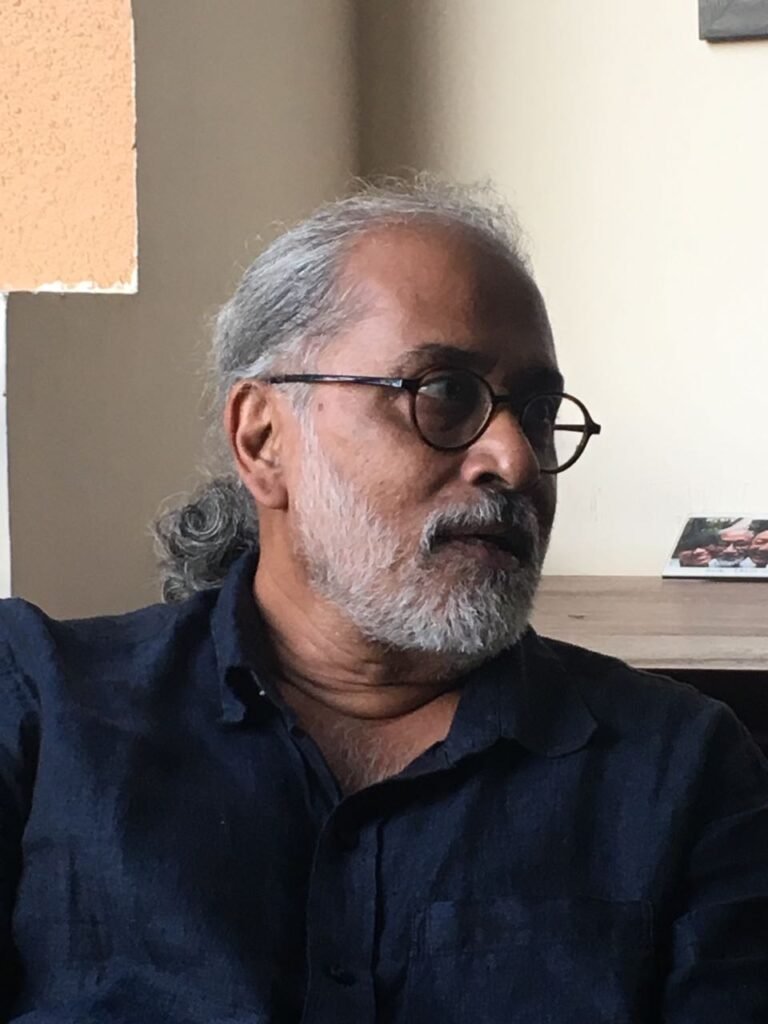
Ashish Rajadhyaksha is a film historian, and an occasional art curator. He is the author of the Encyclopaedia of Indian Cinema (with Paul Willemen, 1994/1999), Indian Cinema from the Time of Celluloid: From Bollywood to the Emergency (2009) and John-Ghatak-Tarkovsky: Citizens, Filmmakers, Hackers (2023). He co-curated the Bombay/Mumbai 1992-2001 section (with Geeta Kapur) of Century City: Art and Culture in the Modern Metropolis at the Tate Modern (2002), the You Don’t Belong festival of film and video in four cities in China (2011) and Memories of Cinema at the IVth Guangzhou Triennial, 2011, and the exhibition Tah-Satah: A Very Deep Surface: Mani Kaul & Ranbir Singh Kaleka: Between Film and Video at the Jawahar Kala Kendra, Jaipur (Jan-Mar 2017).
This presentation offers a set of ‘theses’ on celluloid, taking as an example what I propose are five distinct stages in the career of Ritwik Ghatak’s famous Titash Ekti Nadir Naam.
There are, says Giovanna Fossati (in From Grain To Pixel: The Archival Life Of Film In Transition, 2009), two ways for an archive to approach the digital challenge to celluloid. One ‘identifies the advent of digital technology as a radical change in the nature of the medium’, and a second ‘inscribes digital technology in a broader media landscape where film is one of the participants’. Eminent film historians defend both sides.
The first category, she says, traces to Andre Bazin’s reflection (from Ontology of the Photographic Image) on the photographic image’s unique power of transferring the “reality from the thing to its reproduction”. This is a crucial thesis ‘dear to many film archivists’. But its downside is that, if taken to an extreme, it necessarily ‘fuels the idea that “digital film” is not film anymore, and that it therefore represents the end of film as we know it’.
Clearly Fossati is making a mistake here. Clearly the digital version of a film is not not the film, and yet it is clearly something new. Is this a copy, then? A new iteration? Trying to navigate this most foundational of all archival challenges, I shall explore the afterlife of what was the cinema by adapting the original Bazininan ‘ontology’ a little bit further. We will look in a little more detail at what that transfer from reality to reproduction entails, and what a radical conception of the archive might look like. Using Ghatak’s Titash as an example, I shall split Bazin’s Ontology into five. I will then offer a set of theses on celluloid film.
Ontology A: In 1981 when Safdar Hashmi organized the Delhi retrospective at Delhi’s Pyarelal Bhavan, there was no Titash in the lineup. Ghatak’s masterpiece was presented then as an unfinished film possibly lost, thus a Missing Film on the revered level of Orson Welles’ Don Quixote or Eisenstein’s Bezhin Meadow, as well as – an incredibly important category in Indian cinema – a film that would live on only in memory.
Ontology B: Three years later, in November 1984, a print sourced from Bangladesh was screened at the Nantes Film Festival. Shown for perhaps the first time after Ghatak died, it was an unsubtitled, sprawling, crazy, three hours and fifteen minutes version: yet another classic category of cinema, the archival equivalent of the objet trouvé.
Ontology C: That same year, Ritaban Ghatak claimed to possess a 16 mm print that he claimed was the director’s cut. We had no access to this, but it nevertheless fulfilled FIAF’s definition of originality as original material. We had our Original Artefact.
Ontology D: Inevitably, what followed was an official cut, 45 mins less than what both Nantes and Pesaro had shown, cleaner, seemingly more romantic, more comprehensible, more tragic. We now had the classic category of the Restored film. Typically, film restorers claim fidelity to the original work: restoration D seeks to eliminate A.
Ontology E: Then came the final twist, the final war on memory: the Digital Remaster, produced in the Cineteca Bologna and now marketed by Criterion, the glistening artefact scrubbed clean, it has a new roll call of thank-yous in the credits which include Giorgio Armani, Cartier, Qatar Airways and the Qatar Museums Authority. Memory was finally buried. Or was it?
The ten ‘theses’ on cinema are placed in the digital ‘afterlife’ of film, when post-celluloid forms reproduce cinema and also exist in some sort of war of position with the memory of what used to be cinema. It queries the ‘war on memory’ that digitization presents, and asks how this might transform our understanding of the film archive, both as an institution and as popular practice.
Suggested reading: Ashish Rajadhyaksha, Ten Theses on Celluloid.
As part of National Film Heritage Mission (NFHM), NFDC – National Film Archive of India (NFAI) started digitizing its collection from 2020. More than 5000 films including features, documentaries, short films and news reels, are to be digitized under NFHM by 2025, of which approximately half of them will be eventually restored. The presentation would give an overview of the digitization, restoration and conservation projects being carried out at NFDC-NFAI and related challenges, and how NFHM would facilitate increased access to the collections not only for researchers and academicians, but also the general public.
Bhavesh works in the Film Preservation Section at National Film Archive of India (NFDC-NFAI) as Deputy Manager. Prior to working at the film archive, he completed a certificate course in film preservation from L. Jeffrey Selznick School of Film Preservation, Rochester NY.
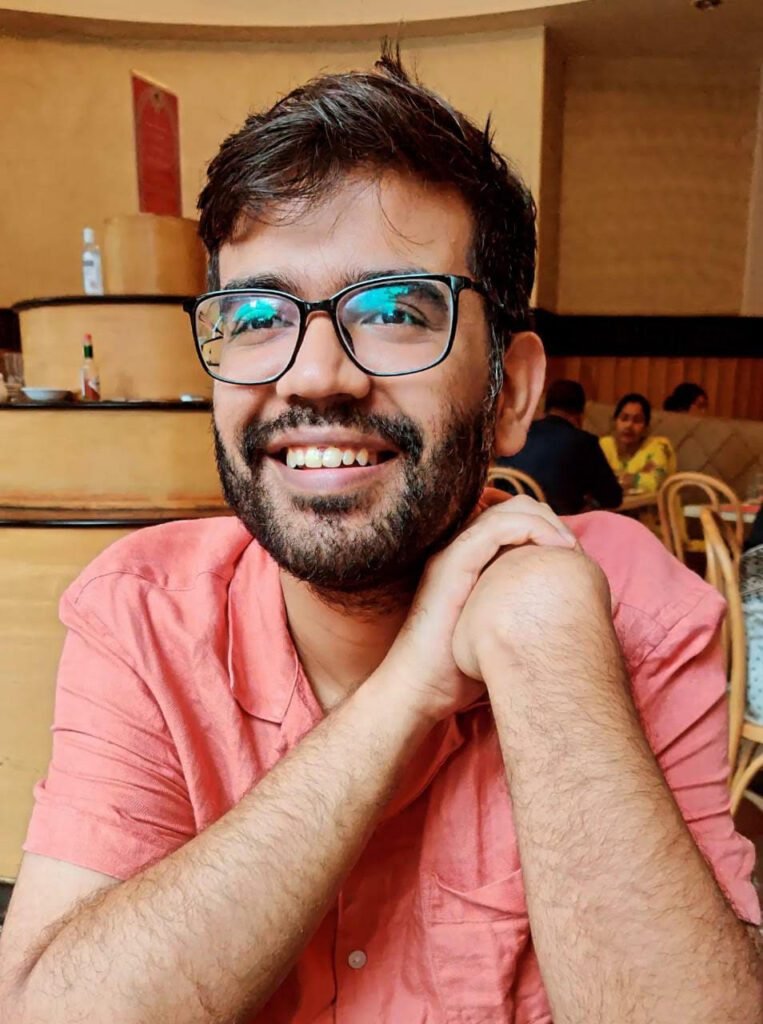
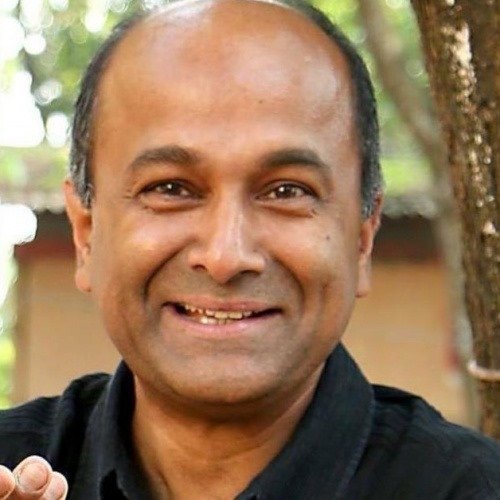
Dilip M Menon, currently the Mellon Chair in Indian Studies at the University of Witwatersrand, received his education at Delhi, Oxford, and Cambridge. As a historian of ideas, his research explores oceanic histories and epistemologies of the global south, emphasizing collaboration across continents to develop social science concepts. His focus includes para-coloniality and the role of the global south in shaping modernity. Specializing in South Asian intellectual and social history, Menon’s work delves into caste, socialism, and inequality, evolving to incorporate generating theory from the global south and engaging with oceanic histories. A Professor of History and International Relations, Menon’s forthcoming edited volume, Cinemas of the Global South: Towards a Southern Aesthetics (2024), highlights his interdisciplinary approach. Noteworthy recent publications include Elementary Aspects of the Political: Histories from the Global South, Ocean as Method: Thinking with the Maritime, Changing Theory: Concepts from the Global South and Walking on Water: Globalization and History.
In this session Dilip Menon shall argue that films serve as a parallel archive and supplement the historical imagination of modern India. They not only reflect the conditions of a time as envisaged by auteur directors but provide an alternative time space that brings together the past present and future. They also imagine a desirable present and utopian future.
Through film frames, photographs, audio recordings, documents and other selected items from the collection of the National Film Archive of India, we travel through founding ideals, found and lost objects, resurrected films and filmographies and nurtured networks.
Iyesha Geeth Abbas has been engaged in research work in audio-visual archives since 2009. Previously, she has worked with the Mumbai-based studio CAMP and has also been part of an extensive silent cinema research project with historian Virchand Dharamsey. She currently works at the National Film Archive of India.
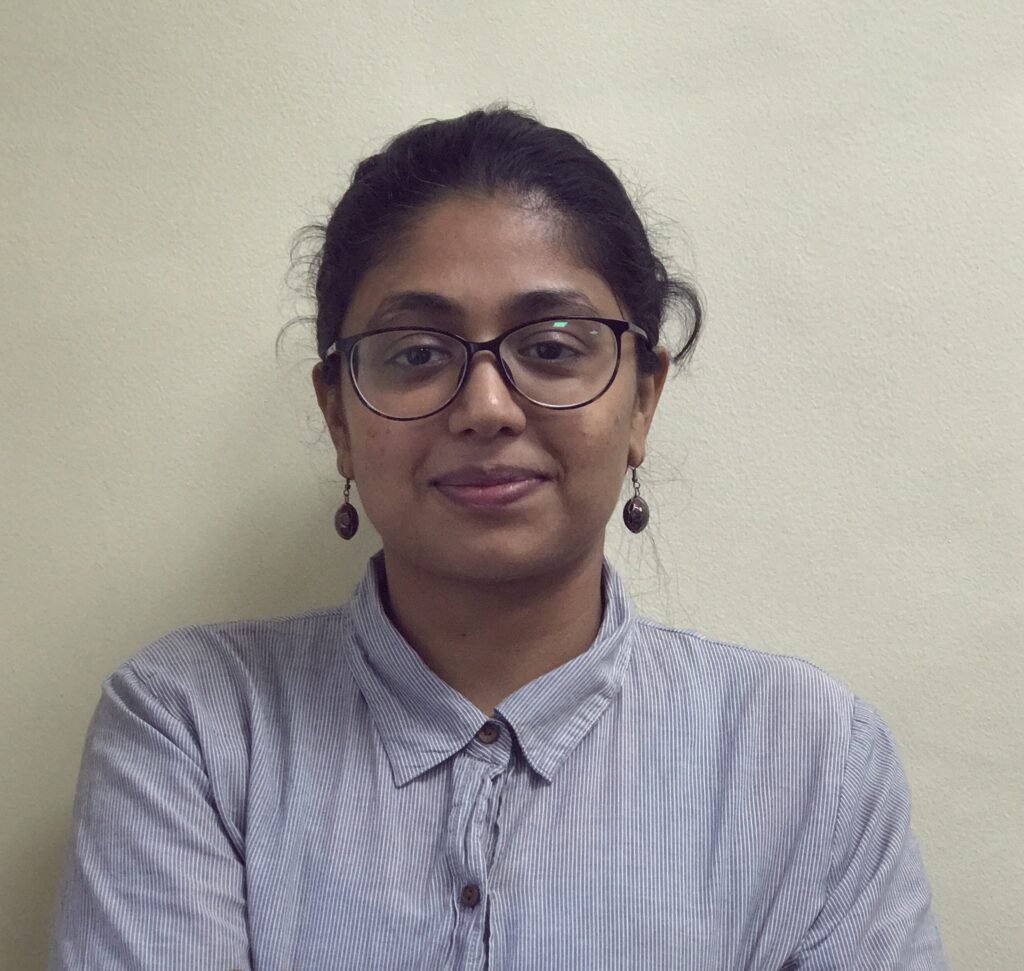

Ollie Huddleston is an award-winning film editor with over 30 years of experience working on cinema and television documentaries. He has worked with many of documentary’s leading lights including Kim Longinotto, Adam Curtis, Sean McAllister, Marc Isaacs and Aliona Van der Horst. He has won two Royal Television Society editing awards and twice been nominated for a BAFTA. His films have won BAFTA, BIFA and Grierson awards in the UK and many prizes at international festivals including Hold me tight, Let me go at IDFA, Rough Aunties and Dreamcatcher at Sundance, and Sisters in Law at Cannes. He is a member of Rough Cut services, a select group of internationally acclaimed editors who consult on and support international documentaries. His most recent feature documentaries include Shooting the Mafia which premiered at Sundance and Dalton’s dream both directed by Kim Longinotto and In the Court of the Crimson King directed by Toby Amies.
In this session the speaker talks about his love for editing old film archive footage, as it offers many possibilities to imagine or reimagine the past. Used well it can add multiple layers to storytelling and play with time in a way that contemporary footage cannot. Seeing the lead character in a story young, in an old photograph and as an old person now is a fantastic tool to understand or imagine the life they have led and can be extremely important in creating the necessary curiosity and involvement from an audience. It adds a different dimension to the story. Working with archive and sound can create an extraordinary immediacy, making the film a notable experience, allowing audiences to witness the past as it unfolded without the fog of memory. It can surprisingly showcase how far the human race has come or how far they still have to go.
The tidal wave of upheavals in the world’s politics, society, and culture that accompanied events such as the Covid-19 pandemic, the growth of regressive ideologies, and the emergence of artificial intelligence – not to mention the slower but all the more pervasive effects of climate change – is posing a major challenge to the field of film preservation, increasingly torn between the competing options of adapting to the status quo or seeking alternatives through technological change, grassroots activism, or the search for sustainable alternatives. Willingly or not, moving image archivists and curators must now cope with a conglomerate of crises and transformations at the global level, of such magnitude as to make the days of 20th century cinema almost unrecognizable.
The symptoms of this phenomenon are especially felt by younger professionals, particularly in the area of education in the ethics of film preservation. For more than half a century, film museums and archives have raised generations of archivists and curators through introductory and specialized courses designed after the traditional models borrowed from the humanities, supplemented in more recent years by professional training and on-site apprenticeship. The academia followed suit, eventually formalizing the achievements of the “arts and crafts” method into a variety of graduate and doctoral programs with a stronger theoretical emphasis. Despite their acknowledged value, these approaches perpetuate an outdated model of knowledge, dangerously detached from the urgency of the issues that have emerged at the dawn of the third millennium.
In the course of the presentation, a basic outline for a contextualized approach to archival deontology will be outlined in relation to the existing FIAF Code of Ethics and its forthcoming revision by the Federation. Within this multidisciplinary framework, a redefinition of the very term “ethics” is meant to encourage a no holds barred “out of the box” mode of thinking about why moving images are being made, how they may contribute to a more equal and just society, and at what conditions they could usefully be preserved for posterity in order to achieve this goal without further contributing to the destruction of our environment.
Paolo Cherchi Usai is a prominent figure in the world of film preservation, curation, and scholarship. With a career spanning several decades, Cherchi Usai has made invaluable contributions to the preservation and promotion of cinema heritage worldwide. He has served as the Senior Curator of the Motion Picture Department at George Eastman Museum in Rochester, New York, founding of the L Jeffrey Selznick School of Film Preservation, and the Nitrate Picture Show, the first annual festival dedicated to the conservation of photochemical film. He is a prolific author whose works span a diverse array of topics, ranging from scholarly analyses of silent cinema to critical reflections on the challenges and opportunities of film preservation in the digital age. Cherchi Usai is a member of the board of the Louis B. Mayer Foundation; co-founder of Domitor (Association for Early Cinema Studies) and of the Pordenone Silent Film Festival; Senior Curator-at-large of the Eastman Museum, and Senior Curator of the Cineteca del Friuli in Italy.
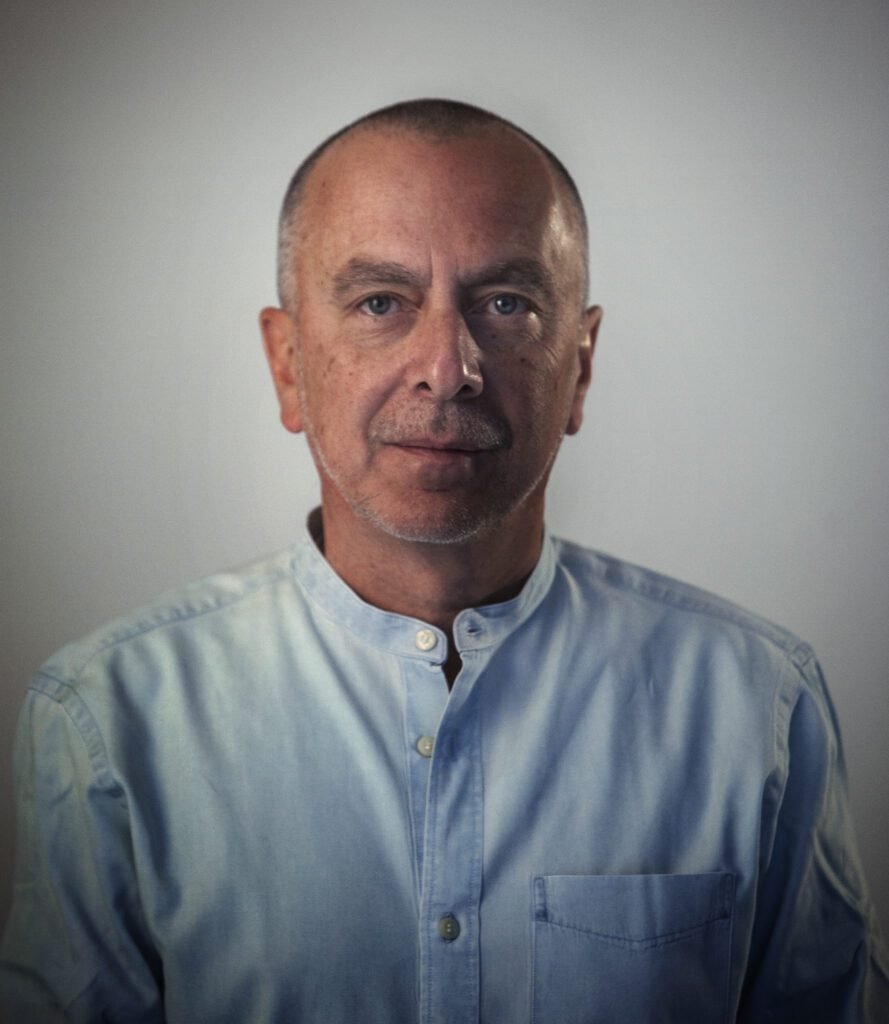
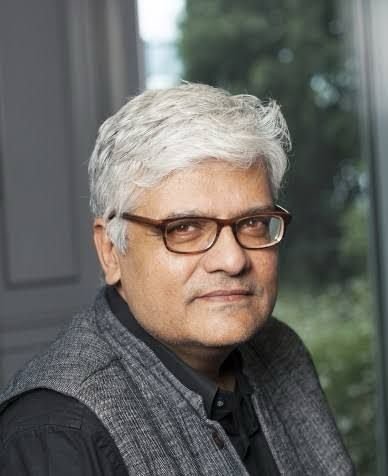
Ravi Vasudevan specializes in film and media history. He co-directs Sarai, the CSDS media and urban studies program, with Ravi Sundaram. Vasudevan serves as guest faculty in Film Studies at Jawaharlal Nehru University, Jadavpur University, and Ambedkar University Delhi. Additionally, he acts as editorial advisor to several film and media studies journals, including Screen, Cinema and Cie, Reframe, and the Historical Journal of Film, Radio, and Television. He has organised numerous film screenings, lecture series, and conferences such as The Many Lives of Indian Cinema, 1913-2013 and Beyond: Disciplines, Histories, Technologies, Futures (January 2014), among others with Ravi Sundaram and Raqs Media Collective. His publications include Making Meaning in Indian Cinema (2000) and The Melodramatic Public: Film Form and Spectatorship in Indian Cinema (2010, 2016). He co-edits Bioscope: South Asian Screen Studies – a significant collective endeavour amongst film-studies folk in India, USA and Europe, and is one of the only journals of its kind, which addresses the essential questions surrounding archiving and field-work. He has co-edited works such as, Sarai Reader 02: The Cities of Everyday Life (2002), and Sarai Reader 03: Media/Crisis (2003), The Marg special issue, Documentary Now, Marg (guest editor, 2018). Presently, his research focuses on non-fiction film infrastructures, post-cinema media artifacts, and media histories related to advertising, publicity, and public relations.
Scholars of Indian cinema have for long been confronted with the challenges posed by the limited holdings of the celluloid archive. They have worked around this absence by assembling an expanded archive which looks to non-celluloid resources for information about the cinema. By this we mean tracking reference to and remediation of cinema in sound media like gramophones and cassettes and audio-files, in evolving video formats, in print and paper, in photography and visual culture. There is a corollary to this agenda, that such an archive is always an intermedial archive, relating to a dynamic transfer and circulation of sensory features amongst media. In Expanded Cinema, Gene Youngblood invokes the artist John Mchale to make this point: “The cinema isn’t just something inside the environment; the intermedia network of cinema, television, radio, magazines, books, and newspapers is our environment, a service environment that carries the message of the social organism. It establishes meaning in life, creates mediating channels between man and man, man and society.” (sic.)
While drawing on this intermedia argument, Ravi Vasudevan also suggests that the archive of cinema needs to attend to certain neglected film-types, amongst which he particularly focuses on the short information film. Short information film is associated with genres such as the newsreel and state propaganda, a host of minor genres such as topicals, actualities and scenics, educational, instructional and process (how-to-make) films, travel and cultural films, promotional, public relations and advertising films. It is important to stress that the short film crossed amateur and professional practices. This blurred line, along with the other elements he uses to describe the short film resonate with contemporary video, suggesting a long and dynamic technological history. While appearing “minor”, short film is also associated with the more ambitious concept of the documentary film, and the term documentary was often used interchangeably with the short information film in the South Asia context. He holds that particular connotation at a distance, preferring to stick to the more modest category of information.
To focus on the short film expands the archive of cinema by addressing the history of celluloid as one differentiated by formats – 35mm, 16mm, 8mm, 9.5mm, later Super 8 – and thereby also highlighting the differentiated circuits, forms of circulation and of exhibition that made up the history of cinema. Short film moves the archive beyond the cinema theatres into a host of spaces and publics, facilitating the possibility of capturing local and embodied experiences of the cinema, and generating media infrastructures that were used by feature film distributors as well. Dispersed into a variety of sites and used for a variety of functions, this is a dimension of the film archive that speaks to a much wider and deeper penetration of the social world by cinema.
The history of film preservation in India and the colossal loss of our audiovisual heritage; the crucial role played by P. K. Nair as a custodian of this heritage during his time at the National Film Archive of India; the circumstances that lead to the establishment of Film Heritage Foundation and its impact in India and the subcontinent; the practice of film preservation against the backdrop of the shift from celluloid to the digital era and the consequent challenges associated with the obsolescence of hardware and software and the constant need for migration to newer formats and the technicalities, ethics and workflow of film restoration. The lecture will be illustrated with photographs, film clips and case studies of the restoration of Satyajit Ray’s Apu Trilogy and Film Heritage Foundation’s restoration of Aravindan Govindan’s Malayalam films Thamp and Kummatty and Aribam Syam Sharma’s Manipuri film Ishanou.
Shivendra Singh Dungarpur is an award-winning filmmaker, producer and archivist. He has produced and directed close to 1200 advertising films as well as short films and documentaries under the banner of his production house “Dungarpur Films”. His first feature documentary Celluloid Man (2012) won two National Awards. His second documentary The Immortals (2015) premiered at the Busan International Film Festival and won the Special Jury Award for the Best Film at MIFF 2016. Passionately committed to film preservation and restoration, he established Film Heritage Foundation (FHF), a not-for-profit organization dedicated to preserving and restoring India’s film heritage. FHF is the only non-governmental organization working in the field of film preservation in India.
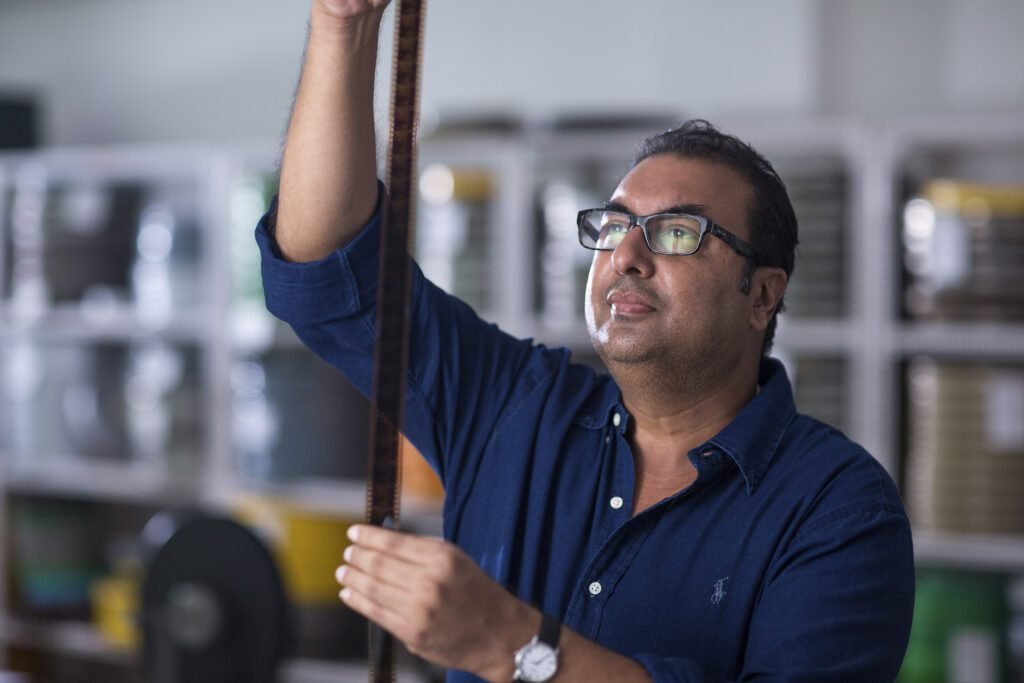

Nida Ghouse is a writer and curator. In 2024, she is teaching as a guest lecturer at Curatorial Studies, Zurich University of the Arts, and at Sound Studies and Sonic Arts, Berlin University of the Arts. Previously, she was faculty at the Centre for Curatorial Studies at Bard College, New York (2022-23) and visiting lecturer at the Interdisciplinary Doctoral Program in the Humanities at Princeton University (2022).
In the mid-1990s Umashankar Manthravadi began his research in acoustic archaeology by measuring the acoustic properties of Ranigumpha, a double-storied structure of rock-cut caves dating back to circa third century BCE, generally believed to have been a monastery, but arguably a theatre. One day he was on site making some tests with his headphones on when an officer of the Archaeological Survey of India came up to him and pried, “So, can you hear them?” Hear whom, exactly? Or what? The people who built the place? The sounds once made?
The officer’s question will echo through this discussion with Umashankar, who began his career as a journalist in Madras in 1967 but quit a year into the Emergency and moved to Delhi. There he found himself working as a freelance sound recordist for independent documentary films and experimental television productions. From this vantage point we will ask: what does it mean for cinema to try and listen to the past, and to its absence which remains. Positing the past as that which cannot be captured, the session will attend to what is lost but nevertheless always with us, a collectivity across time beyond possession, instrumentalisation, and accumulation.
In the mid-1990s Umashankar Manthravadi began his research in acoustic archaeology by measuring the acoustic properties of Ranigumpha, a double-storied structure of rock-cut caves dating back to circa third century BCE, generally believed to have been a monastery, but arguably a theatre. One day he was on site making some tests with his headphones on when an officer of the Archaeological Survey of India came up to him and pried, “So, can you hear them?” Hear whom, exactly? Or what? The people who built the place? The sounds once made?
The officer’s question will echo through this discussion with Umashankar, who began his career as a journalist in Madras in 1967 but quit a year into the Emergency and moved to Delhi. There he found himself working as a freelance sound recordist for independent documentary films and experimental television productions. From this vantage point we will ask: what does it mean for cinema to try and listen to the past, and to its absence which remains. Positing the past as that which cannot be captured, the session will attend to what is lost but nevertheless always with us, a collectivity across time beyond possession, instrumentalisation, and accumulation.
Umashankar Manthravadi began his career as a journalist with the Indian Express in Madras in 1967. He quit during the Emergency and moved to Delhi, where he went on to become a freelance sound recordist for independent film and TV productions. Umashankar served as head technician of the Archives and Research Center for Ethnomusicology from its founding in 1982 until his retirement in 2015. His forays into the field of archaeoacoustics date back to the mid-1990s, when he started a project to map and measure the acoustic properties of various ancient and medieval performance spaces in India. He has presented findings internationally, including at the Acoustical Society of America (Columbus, Ohio, 1999; Cancun, Mexico, 2002), International Federation for Theatre Research (Amsterdam, Netherlands, 2002; Jaipur, India, 2003), Asia Society (New York, 2017), and Kiran Nadar Museum (Delhi, 2017), and in publications like the Sarai Reader 03 (Delhi, 2003). His collaboration with Lawrence Abu Hamdan and Nida Ghouse between 2014 and 2018 under the name Umashankar and the Earchaeologists led to experiments with new formats and participation in exhibition contexts, including Art Dubai Projects (2015), and Centre Pompidou (Paris, 2017). Since 2008, Umashankar has been producing a line of affordable ambisonic microphones named Brahma and is currently developing an all-digital third-order microphone. He occasionally teaches at the (Art)ScienceBLR lab at Srishti Institute of Art, Design, and Technology. In 2019, he created a portable 3D ambisonic sound system during a residency at Wisp Kollektiv in Leipzig.
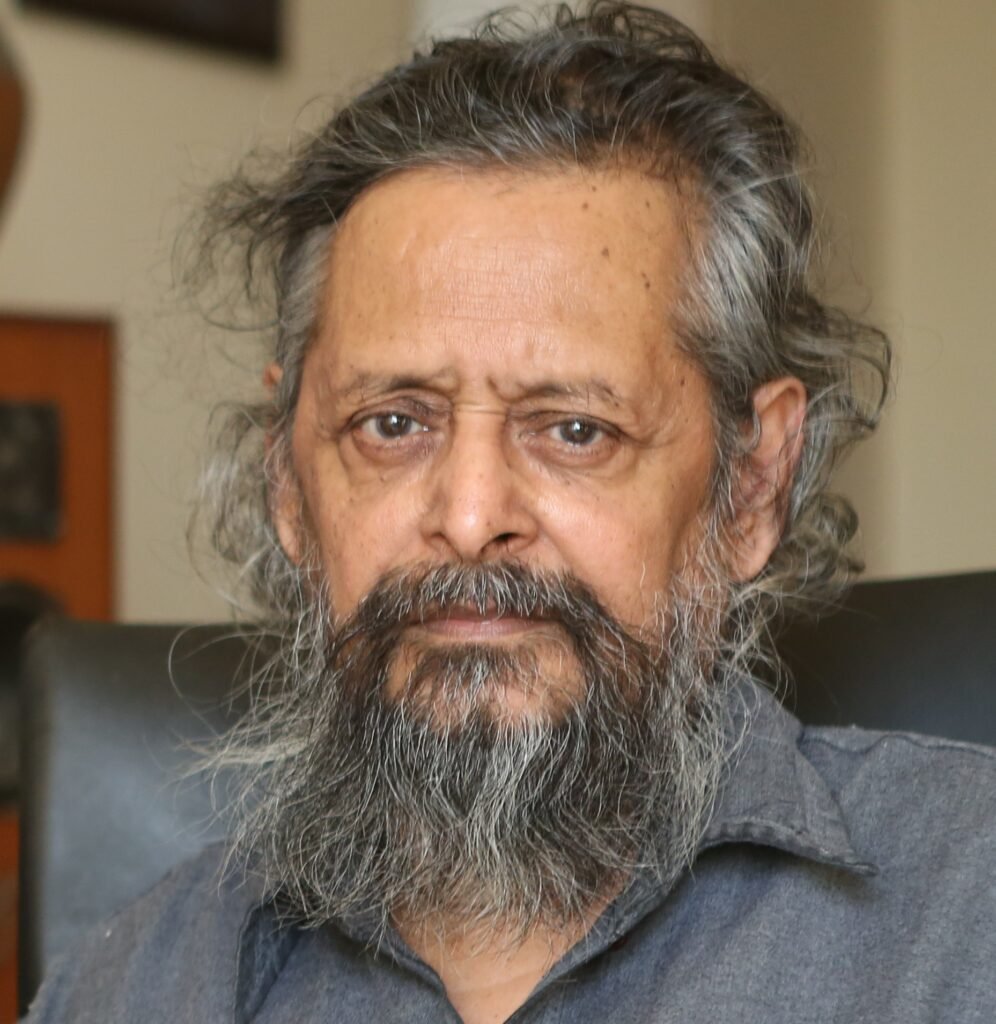
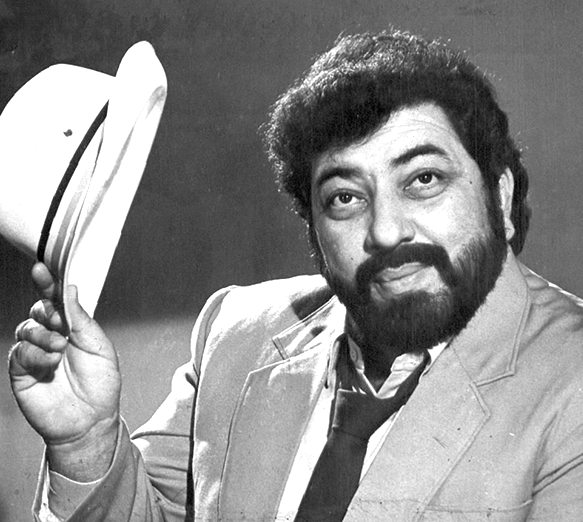
Lorem Ipsum is simply dummy text of the printing and typesetting industry. Lorem Ipsum has been the industry’s standard dummy text ever since the 1500s, when an unknown printer took a galley of type and scrambled it to make a type specimen book.
Lorem Ipsum is simply dummy text of the printing and typesetting industry. Lorem Ipsum has been the industry’s standard dummy text ever since the 1500s, when an unknown printer took a galley of type and scrambled it to make a type specimen book. It has survived not only five centuries, but also the leap into electronic typesetting, remaining essentially unchanged. It was popularised in the 1960s with the release of Letraset sheets containing Lorem Ipsum passages, and more recently with desktop publishing software like Aldus PageMaker including versions of Lorem Ipsum.
In this session the speaker talks about his love for editing old film archive footage, as it offers many possibilities to imagine or reimagine the past. Used well it can add multiple layers to storytelling and play with time in a way that contemporary footage cannot. Seeing the lead character in a story young, in an old photograph and as an old person now is a fantastic tool to understand or imagine the life they have led and can be extremely important in creating the necessary curiosity and involvement from an audience. It adds a different dimension to the story. Working with archive and sound can create an extraordinary immediacy, making the film a notable experience, allowing audiences to witness the past as it unfolded without the fog of memory. It can surprisingly showcase how far the human race has come or how far they still have to go.
Ollie Huddleston is an award-winning film editor with over 30 years of experience working on cinema and television documentaries. He has worked with many of documentary’s leading lights including Kim Longinotto, Adam Curtis, Sean McAllister, Marc Isaacs and Aliona Van der Horst. He has won two Royal Television Society editing awards and twice been nominated for a BAFTA. His films have won BAFTA, BIFA and Grierson awards in the UK and many prizes at international festivals including Hold me tight, Let me go at IDFA , Rough Aunties and Dreamcatcher at Sundance, and Sisters in Law’ at Cannes. He is a member of Rough Cut services, a select group of internationally acclaimed editors who consult on and support international documentaries. His most recent feature documentaries include Shooting the Mafia which premiered at Sundance and Dalton’s dream both directed by Kim Longinotto and In the Court of the Crimson King directed by Toby Amies.
